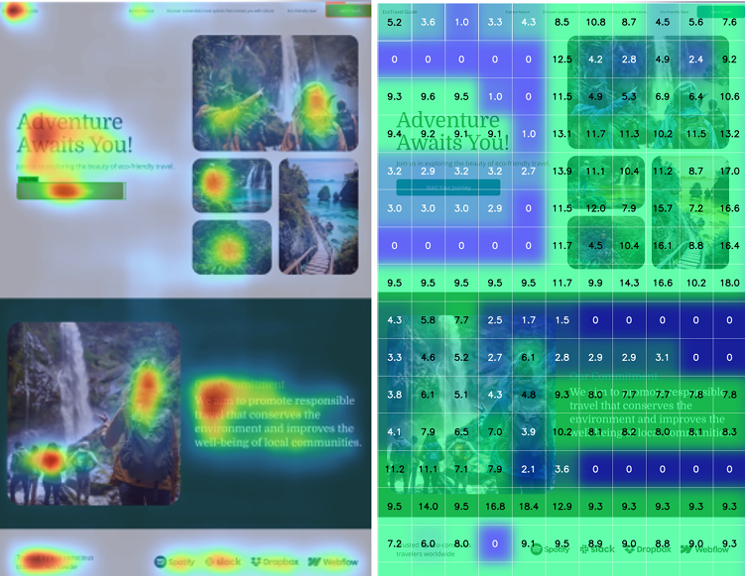A Comparison of the Quality of Website User Interface Design Between Humans and Artificial Intelligence
Main Article Content
Abstract
This research aims to compare the quality of user interface design between websites created by humans and those created by Generative AI. The sample group in this study consisted of 5 web design experts and 5 user interface design specialists. The research tools included: 1) 30 user interface design screenshots of websites, divided into 10 designs by humans and 20 designs by Generative AI using the same prompt, 2) A quality assessment form for user interface design of websites comparing human and AI designs, 3) AI-powered vision analysis tool simulates Eye-Tracking and Heatmap, and 4) An interview form about user interface design of websites comparing human and AI designs. The research findings show that the overall comparison of user interface design quality between human-designed and Generative AI-designed websites in terms of layout appropriateness was at the highest quality level (mean = 4.20) for all three types: human design, design from Uizard website, and design from Figma website. The results of the visibility analysis using AI-simulated Eye-Tracking and Heatmap for the user interface design of websites created by Generative AI on https://figma.com show the highest clarity score of 72 points and a focus score of 96 points. The expert interview summary revealed that the advantages of AI design are convenience and speed, with website structures that are easy to use. However, there are limitations in terms of details that affect human emotions. Nevertheless, both humans and AI can work together to improve the quality of user interface design.
Article Details

This work is licensed under a Creative Commons Attribution-NonCommercial-NoDerivatives 4.0 International License.
References
สุคนธ์ทิพย์ คำจันทร์ และประภาพร กุลลิ้มรัตน์ชัย, “การรประยุกต์ใช้ User Interface (UI) และ User Experience (UX) ในการออกแบบแพลตฟอร์ม,” วารสารวิชาการมหาวิทยาลัยอีสเทิร์นเอเชีย, ปีที่ 16, ฉบับที่ 2, หน้า 63-77, 2565.
V. Sharma, and A.K. Tiwari, “A Study on User Interface and User Experience Designs and its Tools,” World Journal of Research and Review (WJRR), vol. 12, no. 6, pp. 41-44, 2021.
S. Kapoor, “The Impact of Artificial Intelligence
on Modern Website Design,” International Journal for Multidisciplinary Research (IJFMR), vol. 6, no. 3, pp. 1-7, 2024.
J. Grigera, J.P. Espada, and G. Rossi, “AI in User Interface Design and Evaluation,” in IT Professional Published by the IEEE Computer Society, May 5 2023, pp. 20-22.
O. Allyneanhy, and G. MÉRILI, “The Impacts of Ai on Creative Processes In UX/UI Project Development: A Comprehensive Review,” in IX International Symposium on Innovation and Technology.Engineering and the Future of the Industry 2023, Salvador - Bahia, Oct 25-27 2023, pp. 1-8.
Y Liu, Y Xu, and R Song. (2024). “Transforming User Experience (UX) through Artificial Intelligence (AI) in Interactive Media Design,” World Journal of Innovation and Modern Technology, vol. 7, no. 5, pp. 30–39, Sep. 2024.
A Vacanti, F Burlando, AI Paz Ortiz, M Menichinelli (2024). “Challenges and Responsibilities in the UX Design of Text-to-Image AI Models: A Discussion Through a Comparative Heuristics Evaluation”. Temes de Disseny, 40, 156–165.
B. Singh . (2022). “Website quality effect on consumer online purchase behaviour in apparel industry: Implications and analysis. Nucleation and Atmospheric Aerosols,”in Proceeding of AIP Conference Proceedings, 21 October 2022, pp. 050014.
Attention Insignt. (2024). “Knowledge Base Category:Features,” [Online]. https://attentioninsight.com/knowledgebase-category/features/ (Accessed: Dec. 9, 2024).
กุลชลี จงเจริญ, สฤษดิ์พงษ์ ลิมปิษเฐียร, ทวีวัฒน์ วัฒนกุลเจริญ, วัฒนา มัคคสมัน, จรีลักษณ์ รัตนาพันธ์ และศศิธร บัวทอง, “การพัฒนาเว็บไซต์สาขาวิชาศึกษาศาสตร์ มหาวิทยาลัยสุโขทัยธรรมาธิราช,” วารสารศึกษาศาสตร์ มสธ, ปีที่14, ฉบับที่ 2, หน้า 46-58, กรกฏาคม – ธันวาคม 2564.
ภักศจีภรณ์ ขันทอง กชกร เจตินัย ปกรณ์ กัลปดี สุภารัตน์ สุขโท และ สุรศักดิ์ สุขสาย, “การออกแบบและพัฒนาส่วนต่อประสานกับผู้ใช้งานสำหรับคัดกรองโรคหมอนรองกระดูกสันหลังเคลื่อน,” วารสารวิจัยและพัฒนาวไลยอลงกรณ์ ในพระบรมราชูปถัมภ์ สาขาวิทยาศาสตร์และเทคโนโลยี, ปีที่ 18, ฉบับที่ 3, หน้า 73-87, กันยายน – ธันวาคม 2566.
ขวัญใจ สุุขก้อน, เศรษฐกาล โปร่งนุช, จิติมา เสุือทอง และ สุุภัทรา ลูกรักษ์, “การออกแบบกราฟิกด้วยกลไกปัญญาประดิษฐ์เพื่อเพิ่มมูลค่าสินค้าตามแนวคิดเศรษฐกิจสร้างสรรค์ กรณีศึกษา: ของที่ระลึกประเภทสินค้าไลฟ์สไตล์ ตลาดน้ำอัมพวา จังหวัดสมุทรสงคราม,” วารสารวิชาการนวัตกรรมสื่อสารสังคม, ปีที่ 10, ฉบับที่ 2, หน้า 129-139, กรกฏาคม – ธันวาคม 2565.
R. Menges, S. Kramer, S. Hill, M. Nisslmueller, C. Kumar, and S. Staab, “A Visualization Tool for Eye Tracking Data Analysis in the Web,” in ACM Symposium on Eye Tracking Research and Applications, pp. 1–5, Jun. 2020.
J.S. Novák , J. Masner, P. Benda, P. Šimek and V. Merunka, “Eye Tracking, Usability, and User Experience: A Systematic Review,” International Journal of Human–Computer Interaction, vol. 40, no. 17, pp. 4484–4500, 18 Jun 2023.
A.D. Tula, A. Kurauchi, F. Coutinho, and C. Morimoto, “Heatmap Explorer: an interactive gaze data visualization tool for the evaluation of computer interfaces,” LATIN [Online] https://latin.ime.usp.br/ media/papers/pdf/heatmap-explorer.pdf. (Accessed: Dec. 15, 2024).
R. Zhang, “The impact of artificial
intelligence represented by ChatGPT on UI design,” in Proceedings of the 2nd International Conference on Software Engineering and Machine Learning, Chongqing, China, May 15 2024, pp. 56-62.
V.H. Muthazhagu, and B. Surendiran, “Exploring the Role of AI in Web Design and Development: A Voyage through Automated Code Generation,” in Intelligent and Innovative Technologies in Computing, Electrical and Electronics (IITCEE), Bangalore, India, Jan. 24-25 2024, pp. 1-8.
M. Ganović, and A. Avdić, “Generative AI Tools in Web Design”. in International Scientific Conference on Information Technology, Computer Science, and Data Science, Belgrade, Singidunum University, Serbia, May 16 2024, pp. 392-397.
J. Wei, AL. Courbis, T. Lambolais, and G. Dray, “On AI-Inspired UI-Design,” in IEEE Computer Society, Jun 19 2024, pp. 1-7.

